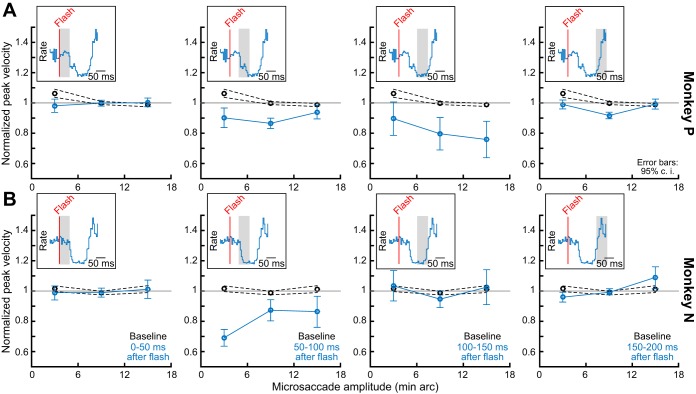Fig. 8.
Alteration of microsaccade kinematics regardless of microsaccade amplitude. In each monkey (A and B), we plotted an index of kinematic alteration (materials and methods) similar to the one used in Buonocore et al. (2016), and we plotted it for different microsaccade amplitude bins (x-axis in each graph; bin width = ±3 min arc around each shown bin center). Each graph shows a different time period relative to flash onset. For microsaccades very close (leftmost column) or very far (rightmost column) from the time of flash onset, no strong kinematic alteration occurred. However, near the microsaccadic inhibition period (i.e., when visual spikes are expected to interact with movement-related spikes in Fig. 1), kinematic alteration like that in Fig. 7 was observed, and this happened for all microsaccade amplitude bins. Thus kinematic alteration occurs even for the smallest possible saccades. Note that the effect was longer lived in monkey P than in monkey N, but so was this monkey’s inhibition period, as well (see insets). Error bars denote 95% confidence intervals.

